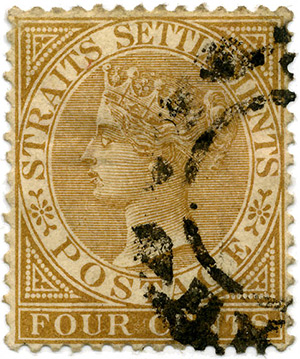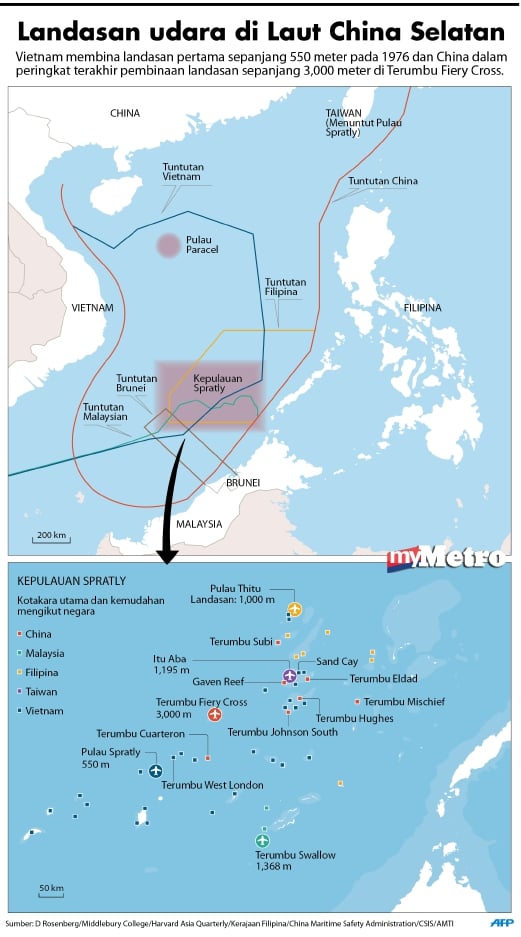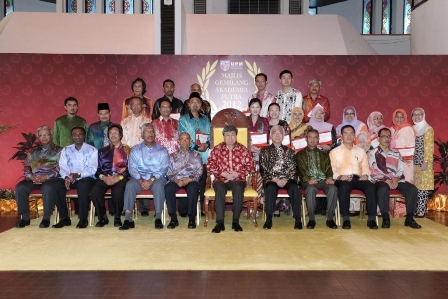
Monday, August 31, 2015
Who write the history? Usually the current authority and always talk good about them and delete others. This make history become interesting and challenging. More research needed and more evidence and witness to proof. BUT who are going to do it? May be those who are dominating media, having money, power and skill and knowledge personal and deep interest in power and history.

Postage stamp of the Straits Settlements from 1883.The history of British involvement in Malaya goes back to 1786, when the East India Company established a trading post on Penang Island. Sir Stamford Raffles founded a British settlement on the island of Singapore in 1819 and by 1830 the British Straits Settlements also included Malacca. From the 1870s the sultans of the small Malay states began accepting British ‘advisers’, who were effectively rulers. In 1896 a federation of Negri Sembilan, Perak, Selangor and Pahang was established with its capital at Kuala Lumpur. Heavy immigration from China and India was encouraged to supply labour for British rubber plantations and tin mines.
Invading from the north, the Japanese rapidly overran Malaya and took Singapore in 1942. After the war, in 1948, a Federation of Malaya was created under British protection, but British and Commonwealth troops had to put down a Communist insurrection, which lasted into the early 1950s. It was by now agreed that Malayan independence was the answer to the Communist claim that they were fighting to free the Malayan people from the British yoke. An election in 1955 was won hands-down by the United Malay National Organisation (UMNO) by running Malay candidates in Malay-dominated areas, Chinese candidates in Chinese areas and Indian candidates in Indian ones. The UMNO’s leader Tunku Abdul Rahman became prime minister when the independent Federation of Malaya came into being in 1957.
At a ceremony in the new Merdeka Stadium in Kuala Lumpur, Abdul Rahman proclaimed Malaya as ‘a sovereign, democratic and independent State founded on the principles of liberty and justice, and ever seeking the welfare and happiness of its people and the maintenance of a just peace among all nations.’ He went on to say that Malaya had been ‘blessed with a good administration forged and tempered to perfection by by successive British administrators’ and called for Britain’s legacy not to be forgotten or spoiled in the future. A message from the Queen welcomed Malaya to the Commonwealth and numerous Commonwealth premiers sent goodwill wishes. The Union Jack was lowered and the Malayan flag hoisted in its place, while elsewhere in the country there were fireworks, bonfires, dances and concerts.
The federation was renamed Malaysia in 1963, when besides Singapore and all the Malay states it also included two areas in North Borneo – Sarawak and Sabah. Singapore opted out and went its own way in 1965.
- See more at: http://www.historytoday.com/richard-cavendish/malayan-independence#sthash.hZZtIa4W.dpuf
Friday, August 28, 2015
Urban agriculture or urban farming is the practice of cultivating, processing, and distributing food in or around a village, town, or city. Urban agriculture can also involve animal husbandry, aquaculture, agroforestry, Urban beekeeping, and horticulture. These activities occur in peri-urban areas as well.




Wednesday, August 26, 2015
Visiting SMK Darul Ehsan Selayang, preparation for Merdeka Day, Recycle and launching of Asean Conner. Students understand science better through outdoor activities and practice recycle. Incomes from recycle activities can pay part of electric or water bills. If 1000 students in one school, they bring 1 pet bottle and 1 aluminium can, we can calculate what is their income one month if they sell it to recycle shop.




Why don't we study the history of Emerging China. Yes they are very confident because they are big country, high population and aggressive in developing skill, technical knowledge, creating opportunity to control the world. We can revise our strategy too to be strong and competitive nation in the region. BUT do we have people and leaders.

Monday, August 24, 2015
Thursday, August 20, 2015
Wednesday, August 19, 2015
Tuesday, August 18, 2015
Wednesday, August 12, 2015
Sunday, August 9, 2015
Malaysian are still talking about leadership in the university. Minister promised to their voters, Malaysia will be important higher education hub for the world. BUT how far university's leaders inherit those ideas and promises. What we hear bringing international youth for prostitute, criminals and creating problems in Malaysia rather than coming to Malaysia for higher education. Actually easy to achieve ministers ideas and public hope if we got good leaders in the university.



Subscribe to:
Comments (Atom)



































